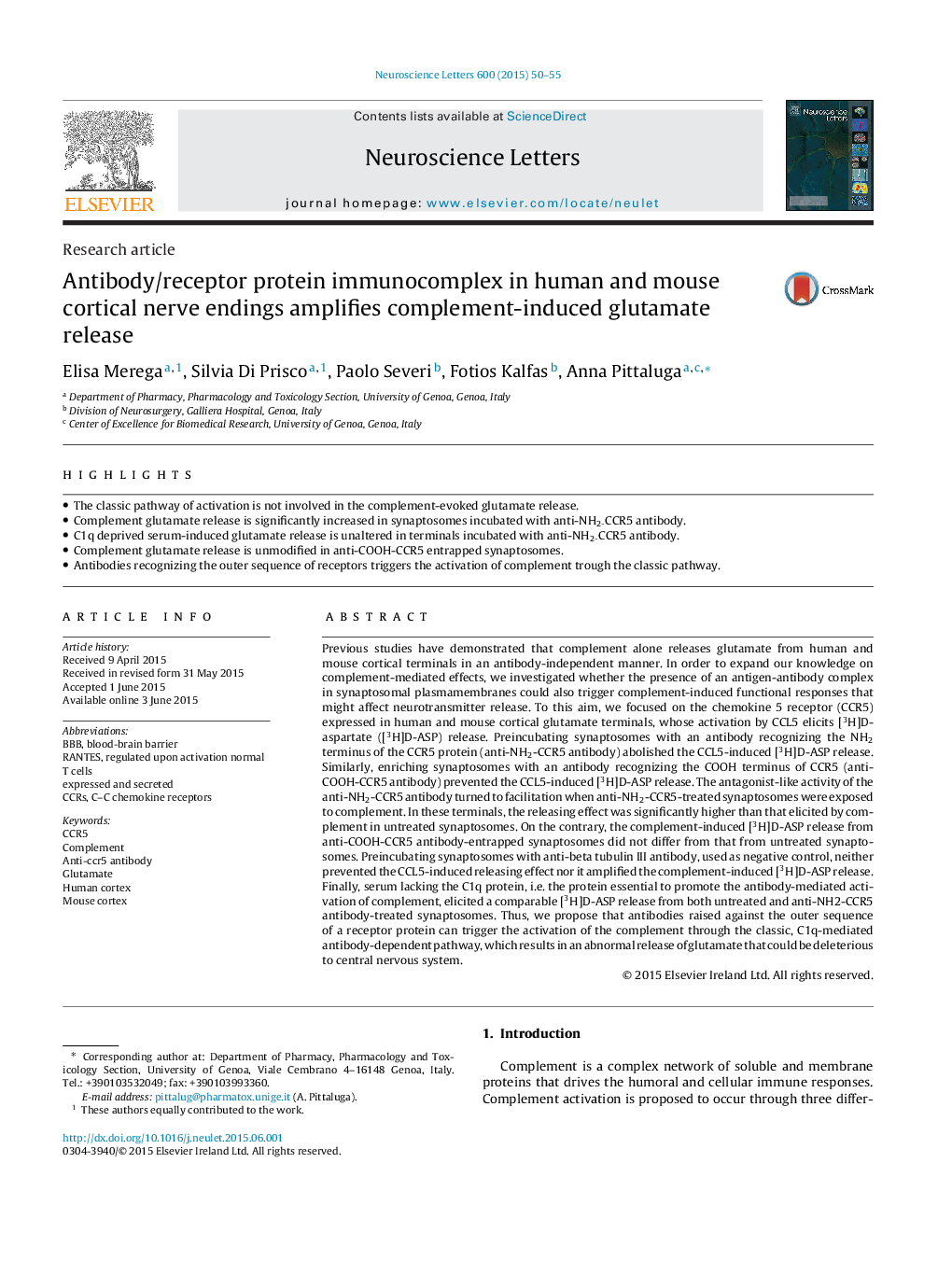| کد مقاله | کد نشریه | سال انتشار | مقاله انگلیسی | نسخه تمام متن |
|---|---|---|---|---|
| 4343384 | 1615099 | 2015 | 6 صفحه PDF | دانلود رایگان |
• The classic pathway of activation is not involved in the complement-evoked glutamate release.
• Complement glutamate release is significantly increased in synaptosomes incubated with anti-NH2-CCR5 antibody.
• C1q deprived serum-induced glutamate release is unaltered in terminals incubated with anti-NH2-CCR5 antibody.
• Complement glutamate release is unmodified in anti-COOH-CCR5 entrapped synaptosomes.
• Antibodies recognizing the outer sequence of receptors triggers the activation of complement trough the classic pathway.
Previous studies have demonstrated that complement alone releases glutamate from human and mouse cortical terminals in an antibody-independent manner. In order to expand our knowledge on complement-mediated effects, we investigated whether the presence of an antigen-antibody complex in synaptosomal plasmamembranes could also trigger complement-induced functional responses that might affect neurotransmitter release. To this aim, we focused on the chemokine 5 receptor (CCR5) expressed in human and mouse cortical glutamate terminals, whose activation by CCL5 elicits [3H]D-aspartate ([3H]D-ASP) release. Preincubating synaptosomes with an antibody recognizing the NH2 terminus of the CCR5 protein (anti-NH2-CCR5 antibody) abolished the CCL5-induced [3H]D-ASP release. Similarly, enriching synaptosomes with an antibody recognizing the COOH terminus of CCR5 (anti-COOH-CCR5 antibody) prevented the CCL5-induced [3H]D-ASP release. The antagonist-like activity of the anti-NH2-CCR5 antibody turned to facilitation when anti-NH2-CCR5-treated synaptosomes were exposed to complement. In these terminals, the releasing effect was significantly higher than that elicited by complement in untreated synaptosomes. On the contrary, the complement-induced [3H]D-ASP release from anti-COOH-CCR5 antibody-entrapped synaptosomes did not differ from that from untreated synaptosomes. Preincubating synaptosomes with anti-beta tubulin III antibody, used as negative control, neither prevented the CCL5-induced releasing effect nor it amplified the complement-induced [3H]D-ASP release. Finally, serum lacking the C1q protein, i.e. the protein essential to promote the antibody-mediated activation of complement, elicited a comparable [3H]D-ASP release from both untreated and anti-NH2-CCR5 antibody-treated synaptosomes. Thus, we propose that antibodies raised against the outer sequence of a receptor protein can trigger the activation of the complement through the classic, C1q-mediated antibody-dependent pathway, which results in an abnormal release of glutamate that could be deleterious to central nervous system.
Journal: Neuroscience Letters - Volume 600, 23 July 2015, Pages 50–55
